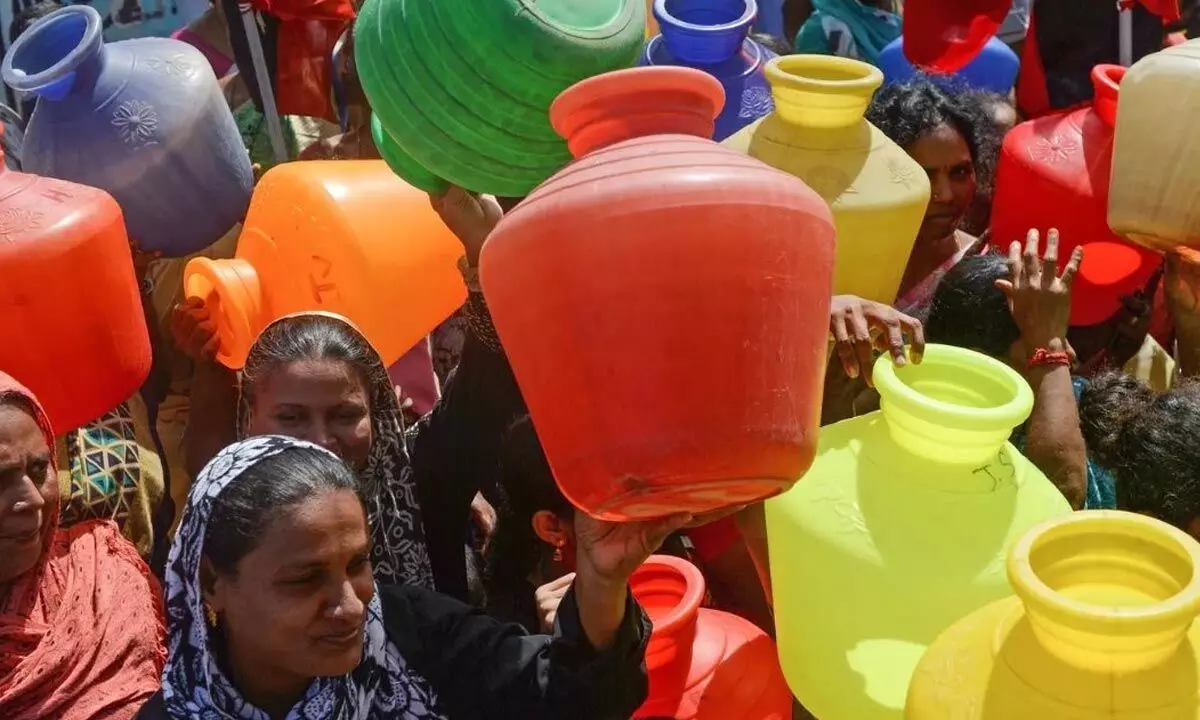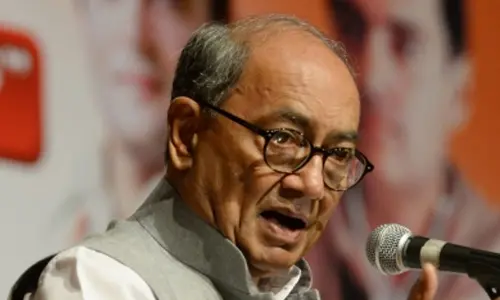304 villages face acute water shortage in Anantapur dist

As many as 304 villages in Anantapur district are facing acute water shortage.
Anantapur: As many as 304 villages in Anantapur district are facing acute water shortage.
In just 15 days from December 30, the number of villages reeling under water crisis shot up to 304 from 280, forcing the Rural Water Services Department to operate more tankers, according to the Groundwater Department.
Around 3.18 lakh people are being provided water through tankers, as groundwater levels in Anantapur – one of the nine districts in the State identified as water-stressed by the Central government – are depleting day by day. The groundwater levels in the district plummeted to 16.25 metres below ground, 6.94 metres deeper than what it was during the corresponding period last year. The district has also recorded a rainfall deficit of 38 per cent. According to groundwater officials, the situation has acquired an alarming proportion in 22 mandals in the district.
An anticipated depletion of groundwater sources is likely to compound drinking water problem in several municipalities situated in Anantapur district. The Gooty, Rayadurg and Guntakal along with the mandal headquarters are in the midst of an unprecedented water crisis with acute shortage of not just drinking water but also water for daily use.
Residents Welfare Association president M Suresh Babu suggested improving groundwater level in the command area by working out the feasible (optimal) number of wells in the tank command area using annual groundwater draft. It is expected that in the tank commands, about 20% increase in the number of wells is possible. He also suggested adopting sluice rotation (opening and closing the sluices in alternate weeks) so that groundwater and tank water would be simultaneously (conjunctively) used throughout the crop season.
These options provide a range of strategies for modernising water tanks, addressing issues such as sedimentation, groundwater recharge, external water sources, and conjunctive use. The choice of option would depend on factors such as local hydrology, water demand, and the specific challenges faced by each tank system, he added.
Major drinking water source of Rayalaseema is Tungabhadra reservoir, an interstate project under Krishna basin. It has been witnessing depleted water level following poor South West monsoon.














